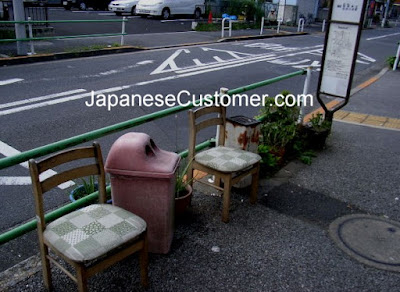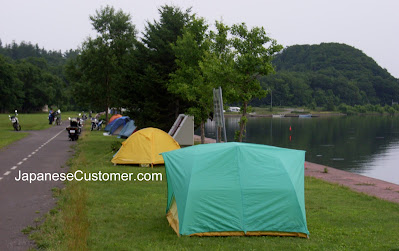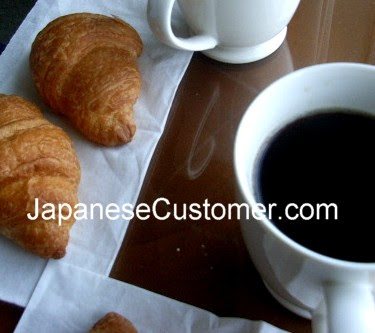May 06, 2022
Global Consumer Trends 2022: 🌸 over 65+ in Japan expected to be 35% of the country’s population by 2040
Labels: Article, Lifestyle, Picture, Society, Statistics
April 10, 2022
Technology 🌸 Japan breaks world record for fastest internet speed
Source:
https://lnkd.in/gEcxJTNS
#technology #internetspeed #record #terabit #news #japan #japanesecustomer #data #tech 🌸
Labels: innovation, Picture, Statistics, Technology
April 07, 2022
Statistics: Japanese outdoor gear valued at 4.45 billion USD in 2020.
#statistics #camping #outdoor #japan #japanesecustomer
Labels: Lifestyle, Picture, Statistics
March 25, 2022
Statistics: Japan 🌸 is the fifth-largest importer of coffee and the largest Asian market for coffee products.
Source: Coffee Business Intelligence
#statistics #japanesecustomer #coffee #funfacts #news
Labels: Culture, Food, Lifestyle, Statistics
March 23, 2022
Demographics: Japanese 🌸 "silver" market is estimated at $1.1 trillion
https://www.idbinvest.org/en/blog/social-infrastructure/silver-economy-inclusive-responsibility-thriving-business
#japanesecustomer #marketing #demographics #statistics #news #market #funfact #silvereconomy
Labels: Finance, Lifestyle, Marketing, Statistics
March 22, 2022
Picture: A 🌸 Japanese Sake Bottle is called an Isshōbin 1800ml
" Units used for sake are
1 sho = 10 go = 1.8 liters
1 koku = 10 to = 100 sho (approx. 180 liters)
1 sho is a volume that can be put into obin (literally, large bottle) for sake, namely isshobin (literally, one-sho bottle) which is usually seen in liquor shops."
Source:
https://lnkd.in/g6UjpYZu
Fun Fact: Japan has a number of measurement systems
Learn more here
https://lnkd.in/gsUVf-KU
#ml #sake #bottle #measurement #japan #japanesecustomer #statistics #funfact #一升瓶 #日本酒 #日本のお客様
Labels: Culture, Industry, Lifestyle, Picture, Statistics
June 20, 2020
Japanese Customer: 22.2% of workers in Japan keep working after 65 years of age
recent government report showed that
22.2 percent of Japanese aged 65
and above were employed last year,
compared with 14.4 percent in
The United States and 2.9% in Germany in 2004"
Source: Japan tries to fill gaps before retirement surge
Reuters
International Herald Tribune,
Tuesday 11th July 2006 page 13
Learn more about study in Japan at Study Abroad Japan
Labels: Statistics
June 19, 2020
Japanese Customer: 80 per cent of E-commerce in Japan is undertaken by teenagers aged 15-19 was done on cellphones in 2005
“According to government data, 80 per cent of e-commerce by teenagers aged 15-19 was done on cellphones in 2005”.
Source: Japanese Thumbs doing the buying,
Sachi Izumi, Special Correspondent,
The Birmingham Post,
September 18, 2006
http://www.Intellisearchnow.com
Learn about study in Japan at Study Abroad Japan
Labels: Statistics
Japanese Customer: Forecasts estimate that by 2010 Japan will have 107.9 million cell phone subscribers
Forecasts predict”that the number of Japanese mobile subscribers will record 4.03% ..from 2003 to 2010 and reach 107.9 million by the end of 2010.”
Source: It is predicated that Japanese Mobile Subscribers Will Reach 107.9 Million by the end of 2010 article
by Research and Markets, September 15th, 2006
http://home.businesswire.com accessed 17/9/06.
Learn about study in Japan at Study Abroad Japan
Labels: Statistics
Japanese Customer: Japanese customers made plenty of calls to emergency ambulances in 2005
Source: The small print by Tabitha Miles
Dec 01 - Dec 07, 2006
Metropolis Magazine, page 4
www.metropolis.co.jp
Learn more about study in Japan at Study Abroad Japan
Labels: Statistics
Japanese Customer: DoCoMo enjoys a 56 per cent market share in the cell phone market - October 2006
Source:New flexibility of cell phones
Editorial
Japan times newspaper
Monday October 30, 2006, page 16
Labels: Statistics
Japanese Customer: Japanese Customer sent 3.79 billion New Year greeting cards in 2005
Source: The small print by Tabitha Miles
Nov 17th Nov 23, 2006
Metropolis magazine, page 4
www.metropolis.co.jp
Labels: Statistics
Japanese Customer: Poverty rate is rising in metropolitan areas
"In 1996, the rate was 11.2 percent, rising to 13.4 percent in 1999 and 15.7 percent in 2002"
Source: Expert warns income disparity, poverty rate to keep getting worse
By Akiko Kondo
Kyodo News
Thursday November 23rd 2006
Japan Times online
http://search.japantimes.co.jp/cgi-bin/nn20061123f4.html
Learn about Japan at Study Abroad Japan
Labels: Statistics
Japanese Customer: The average age of first marriages for women jumped to 29.8 years of age
“Women are waiting longer to marry – the average age for first marriages jumped to 29.8 in 2005 from 25.9 in 1992 – while the share of single women in their early 30’s rose to 32 percent last year from around 14 percent in 1990”
Source: Career women opting to date younger men
– Marriage-minded shun money, status.
By Chikako Endo,
Reuters, The Japan Times,
23 September 2006, page 3
Learn about Japan at Motorcycle Japan
Labels: Statistics
Japanese Customer: Average hours of instruction for 7 to 8 year olds in Japan is below OECD average
in Japan is 712 hours compared to
981 hours for an Australian,
the OECD average is 758 hours…
This situation is similar at the secondary level of education”
Source: Education at a glance, 2006
OECD Briefing note for Japan
http://www.oecd.org
accessed 20/09/06
Learn about Japan at Motorcycle Japan
Labels: Statistics
Japanese Customer: Patent applications lodged by Japanese in 2004 the most in the world
"540,100 - Japanese patent applications filed in 2004, the most in the world."
Source: The small print by Tabitha Miles
Nov 3 - Nov 9, 2006
Metropolis Magazine, page 4
www.metropolis.co.jp
Learn more about study in Japan at Study Abroad Japan
Labels: Statistics
Japanese Customer: Japanese customers currently use an estimated 94 million cell phone handsets and growing
Source: New flexibility of cell phones
Editorial
Japan times newspaper
Monday October 30, 2006, page 16
Learn more about Japan at Motorcycle Japan
Labels: Statistics
Japanese Customer: Japanese students in the ELICOS sector and their pathways in Australia summary 2002 - 2005
The following is a summary of Japanese student participation in the ELICOS sector in Australia 2002 - 2005 based on Australian Education International, Research Paper " Study pathways of international students in Australia through the ELICOS sector, 2002 to 2005", Number 2006/2.
English Language Intensive Courses for Overseas students or (ELICOS) in the period 2002 to 2005 in Australia represented 14.2% of all single sector students and 19.5% of multiple sector students. Japanese students represented 12.9%of all international students enrolled in ELICOS 2002 - 2005, the third largest population of students after the Republic of Korea and China.
Pathways of study Japanese students chose in Australian education institutions included ELICOS only 65.6%, ELICOS - VTE (Vocational education) 16.6% and ELICOS - Higher Education 5.5%. Revealing that Japanese students have yet to fully participate in Australian education possibly due to their confidence based on their English language skills.
In terms of length of study in ELICOS courses, 1.3% of Japanese students studied 1 to 4 weeks, 46.9% studied 5 to 26 weeks and 51.8% studied 27 or more weeks. These figures indicate that Japanese students are not confident of their English language skills even though they have studied English for a number of years at school in Japan.
ELICOS is intensive English whereby students study for four or more hours per day depending on the course plus homework, revision and study for tests and assignments meaning that students could easily study 10 plus hours a day. English study in Japan is less rigorous and the change over between the two systems for the student must be very difficult. Learning language in a condensed format may be very good for some students and not so good for others. Pressure can be both a positive an a negative in learning depending how it is applied and interpreted by the individual student.
In summary 63.9% of ELICOS sector Japanese students undertook non award courses which suggests that they wanted to learn without the course counting on their academic record. That is, they wanted to learn, practice and achieve English skills before undertaking a course that would count.They wanted the freedom to learn and improve.
The results of this research have important implications for attracting, managing and retaining Japanese students to ELICOS courses in Australian education.
Labels: Education, Statistics, Trends
March 01, 2020
Pharmaceutical spending in Japan estimated at 2 percent of GDP in 2018
"Pharmaceutical spending as a percentage of GDP selected countries, 2018 or latest available.
Japan estimated at 2 percent of GDP, Source: OECD"
Source:
There's no pill for that, The Economist Magazine, February 15th, 2020, page 36.
Labels: Finance, Lifestyle, Medicine, Statistics
February 26, 2020
Japanese glass eels can fetch up to US$30,000 a kilo
Labels: Food, Lifestyle, News, Statistics, Trends






















